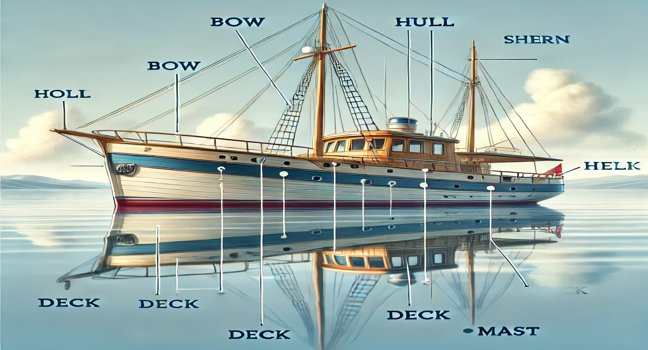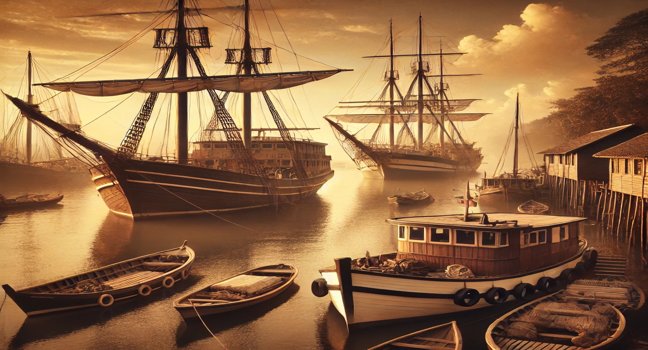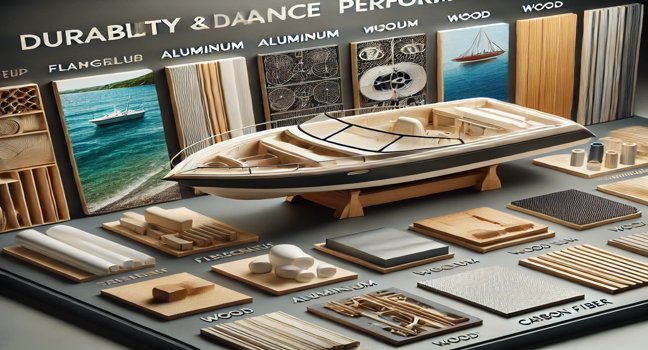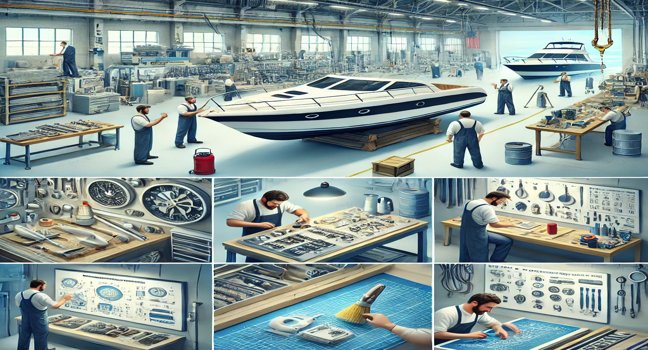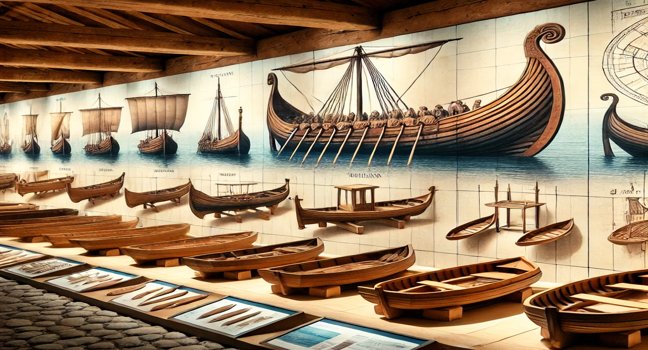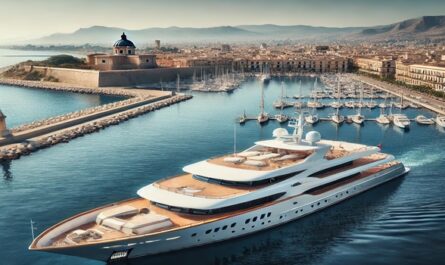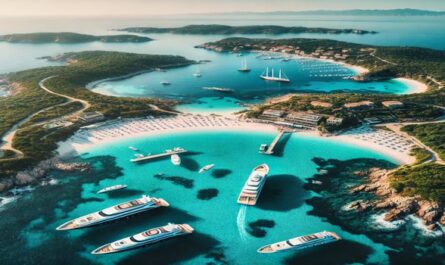A Journey Into the Past: Yacht and Boat History
Have you ever wondered about the origins of the boats we use today for travel, leisure, or racing? Let’s delve into the history of yachts and boats!
The story begins in the 17th century in the Netherlands. It all started with a gift. In 1660, King Charles II of England received a boat named “Mary.” Allegedly, his boat is the first boat in England.
The term “yacht” comes from the Dutch word Jaght, which means “hunter” or “pursuer.” This name reflects the original purpose of these vessels. In the 1400s, people were using the yachts to chase pirates and smugglers, showcasing their versatility and speed. At that time, people did not differentiate clearly between boats and yachts.
Boat Anatomy and Boat Types
Understanding the boat anatomy can enhance your appreciation of these marvelous vessels. Historically, the term “yacht” referred to various types of sailing or motorized craft, excluding rowing boats. Today, people were categorizing the yachts primarily by their length.
In modern times, people make boats from materials like wood and fiberglass. The tourism industry’s growth has boosted the popularity of blue tours and voyages. As a result, people build modern yachts with superior materials and skilled craftsmanship.
1. Boat Types
Boats come in many types, each designed for specific purposes and preferences. Here are some common boat types:
- Sailboats: These boats use sails to harness wind power. They come in various designs, from small dinghies to large cruising yachts. Sailboats offer a traditional and eco-friendly way to enjoy the water.
- Motorboats: Powered by engines, motorboats are ideal for speed and convenience. They include speedboats for quick trips, cabin cruisers for longer stays, and pontoon boats for comfort cruises and social gatherings.
- Yachts: Yachts are luxurious vessels available in both sail and motor versions. People designed them for comfort and style, often featuring high-end amenities and spacious accommodations. Sailing yachts offer the thrill of wind-powered travel, while motor yachts provide a luxurious cruising experience.
2. Boat Anatomy
Understanding boat anatomy helps in appreciating the craftsmanship and functionality of these vessels. Here are the main components:
- Hull: The hull is the main body of the boat that sits in the water. It provides buoyancy and stability. People make hulls from various materials, including wood, fiberglass, and metal.
- Deck: The deck is the flat surface on top of the hull where people stand and move around. It can include features such as seating areas, navigation equipment, and storage compartments.
- Sails and Rigging: On sailboats, sails are essential for catching the wind and propelling the boat. Rigging includes the ropes and cables used to control the sails and maintain the boat’s balance.
- Engine and Propulsion: Motorboats and motorized yachts rely on engines for propulsion. The engine’s power and type determine the boat’s speed and performance.
- Interior: The interior of a boat includes living quarters, kitchens, and bathrooms, especially on larger yachts. The layout and amenities vary based on the boat’s size and purpose.
Materials Used in Boat Construction
The materials used in boat construction significantly affect their durability, performance, and maintenance. Here are some common materials:
1. Wood
Wood has been a traditional material for boat construction for centuries. It offers a classic look and natural beauty. Common types of wood used include:
- Teak: Known for its durability and resistance to water damage, teak is often used for decking and interior finishes.
- Mahogany: Valued for its strength and attractive appearance, people use mahogany in both structural and decorative elements.
- Pine: A more affordable option, designers use pine in various boat parts but requires regular maintenance.
- Oak: Oak is a strong and durable wood, often used in the construction of boat frames and hulls.
2. Fiberglass
Fiberglass is a modern material made from glass fibers and resin. It is lightweight, strong, and resistant to corrosion. Fiberglass boats are easier to maintain and can last for many years.
3. Metal
Aluminum and steel are in the construction of some boats, particularly for commercial or high-performance use. Metal boats are robust and durable, but they can be heavier and require regular maintenance to prevent rust.
Boat Production and Maintenance
The production time of a boat varies based on its size and type. The construction of smaller boats can finish relatively quickly. Larger yachts may take several months or even years to complete. Advances in technology and materials have improved the efficiency and longevity of boat construction.
1. Production
Modern boat building involves advanced techniques and materials, leading to faster production times and higher quality vessels. Boat manufacturers use computer-aided design (CAD) and automated machinery to ensure precision and consistency.
2. Maintenance
Regular maintenance is crucial for keeping boats in good condition. Traditional wooden boats require frequent upkeep, including sanding, painting, and inspecting for damage. Modern boats, especially those made from fiberglass or metal, also need regular maintenance but generally require less frequent attention.
3. Longevity
Some boats are built to last for decades or even centuries. High-quality materials and proper maintenance can extend a boat’s lifespan significantly. Many classic boats remain in use today, cherished by their owners for their historical and aesthetic value.
The Evolution of Boat Anatomy
The evolution of yachts and boats reflects advancements in technology, materials and design. From basic wooden boats to advanced modern yachts, the evolution of boat design highlights human creativity.
1. Early Designs
Early boats were basic, made from wood and propelled by sails or oars. Over time, innovations such as improved hull designs and the introduction of engines revolutionized boat construction.
2. Modern Advances
Today’s yachts and boats benefit from cutting-edge technology, including GPS navigation, automated systems, and advanced materials. These innovations enhance performance, safety, and comfort on the water.
3. Future Trends
The future of yachts and boats includes exciting trends such as eco-friendly materials, electric propulsion, and smart technology. These developments aim to make boating more sustainable and enjoyable for future generations.
Conclusion
The world of yachts and boats is vast and varied, offering endless opportunities for exploration and enjoyment. Understanding the history, types, and boat anatomy enhances our appreciation of these remarkable vessels.
Classic wooden boats or modern yachts, the evolution of boating shows our enduring love for the sea. Dive into this fascinating world and discover the joy of sailing and boating for yourself!

